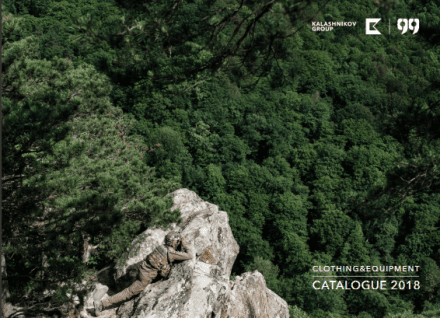Gruppa 99 has released their 2018 English language catalog. Gruppa 99 is a Russian technical clothing and load-bearing equipment manufacturer who’s products are currently in use with Russian SF units. You can check out the catalog by clicking the image above.
Tags: Gruppa 99



I see lots of high end outer clothing made of 100% nylon, polyamide (=nylon) is a thermoplastic material and as far as I know, it will eventually melt (because it’s a thermoplastic) and contribute to a fire (because it is a hydrocarbon).
Is fire resistance and retardance a thing of the past?
Or am I completely wrong?
It isn’t FR, but that’s the case with lots of cold-weather gear and technical outerwear. The Russians never hopped on the FR train because they didn’t fight the same wars as the US. Also, it just depends on the mission. Mounted patrols with a high IED risk? FR is pretty important. But for alpine or jungle use (Pata’s jungle uniform is 100% nylon), maybe not as much. I don’t know, don’t take my word for it, I’m not an expert. But that seems to be the trend–if it’s necessary, or possible w/o compromising garment objectives, FR. Otherwise, without. The latest Army solicitation for a cold-weather clothing system said that FR was not a requirement, but would be desired if it didn’t negatively affect function.
It’s nice that they put out the catalogue, but I wish there was an English version of their website, too.
FR Nylon exists, it’s stiffer or very short lasting depending on how it’s manufactured.
My SWAG would be that baselayers are the most important thing to have FR, then uniform then gear. I think my vest is the only thing I’ve been issued with FR that isn’t natural.
FR rated clothing often traps more heat than non-FR rated clothing due to the treatments that have to be put onto certain fabrics. So if you are in a hot environment where FR is needed, then it makes sense to avoid it where possible. Merino wool is good option due to its natural FR properties which allows you to have a thinner FR base layer.
I think another issue is that a lot people don’t understand what FR really means, or the standards that apply to FR garments. For example, a lot of facilities with FR requirements want cotton to be used for undergarments, not because it will necessarily stop flames per-say, but more due to the fact that it takes longer to burn and won’t melt to your skin when it does. This is different than say a nomex flight suit which is supposed to not burn up to a certain point to try and give someone a chance to escape from a burning vehicle, etc.